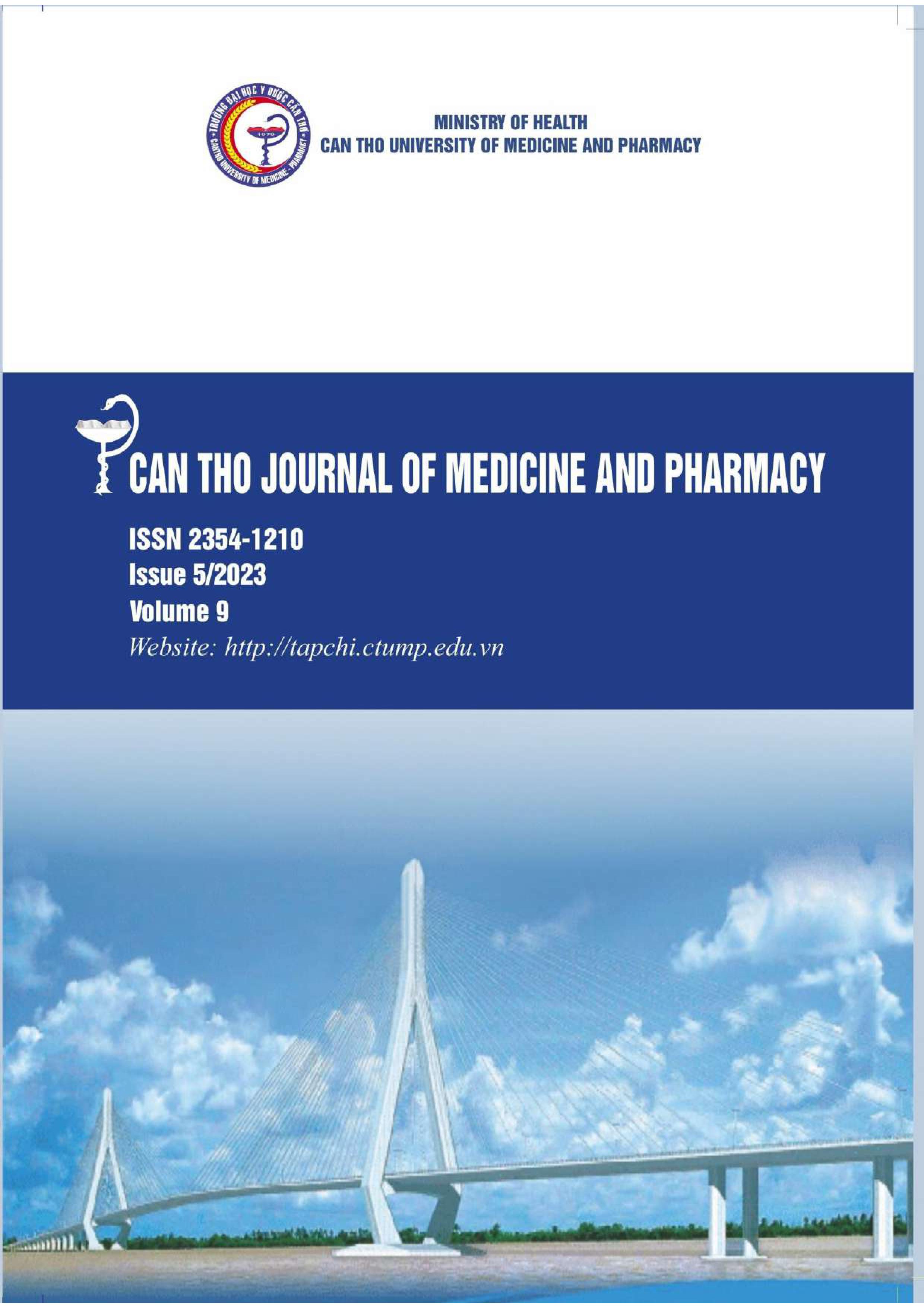CHRONIC OBSTRUCTIVE PULMONARY DISEASE IN CAN THO: CLINICAL CHARACTERISTICS AND FEATURES OF TREATMENT BY CLINICAL PHENOTYPES
Nội dung chính của bài viết
Tóm tắt
Background: phenotypic approach in the treatment of COPD is lacking in general medical facilities, despite the importance of this data. Objectives: The study aimed to identify divergences in features, pharmacologic regimens of COPD by clinical phenotypes in the real-life context of care units in Can Tho City that manage outpatients with chronic respiratory diseases. Materials and methods: a prospective cohort study was carried out. We enrolled 158 patients who met the sampling criteria for this study. Data collected include (1) biometric characteristics, (2) medical history, (3) characteristics of COPD (including: symptoms, chest radiograph, peripheral blood eosinophil count, pulmonary ventilation parameters, bronchodilator test, and pharmacological regimen). COPD were classified into three phenotypic groups according to the criteria of the 2017 Spanish guideline (GesEPOC) and were also categorized into four groups (ABCD) according to the 2019 GOLD guideline. Results: the clinical AE phenotype was predominant at 41.8%, whereas the NON-AE and ACO was 38.6% and 19.6%. According to the GOLD, classifying as group A, B, C, D is 19%, 34.8%, 10.1%, and 36.1%, respectively. Between the different phenotypic groups, there were a variety of variances in the eosinophil count of the peripheral blood, but there were no changes in some kinds of chest radiograph images. Response-to-bronchodilator-test rate was higher in the ACO phenotype than in the NON-AE and the AE phenotypes. All ACO patients who received LABA/ICS. The proportion of using LABA/ICS accounted for most NON-AE and AE patients. Conclusions: among clinical phenotypes, the AE phenotype accounted for the highest percentage. There were differences in the clinical characteristics among phenotypes. ICS using is popular among COPD patients.
Chi tiết bài viết
Từ khóa
Chronic, Obstructive, Pulmonary Disease, Clinical Phenotypes
Tài liệu tham khảo
2. Centers for Disease Control and Prevention (2009), "Cigarette smoking among adults and trends in smoking cessation - United States, 2008", MMWR Morb Mortal Wkly Rep , 58(44), pp. https://www.cdc.gov/mmwr/preview/mmwrhtml/mm5844a5842.htm .
3. Chai C. S., Liam C. K., Pang Y. K., et al (2019), "Clinical phenotypes of COPD and health-related quality of life: a cross-sectional study", Int J Chron Obstruct Pulmon Dis , 14, pp. 565-573.
4. Chai C. S., Sumastika Bt Mos, Diana-Leh-Ching Ng., et al (2020), "Clinical phenotypes and heath-related quality of life of COPD patients in a rural setting in Malaysia – a cross-sectional study", BMC Pulmonary Medicine , 20(1), pp. 254.
5. GINA GOLD 2017 OVERLAP POCKET GUIDE (WMS) 2017 ACO (2017), "https://ginasthma.org/archived-reports/gina-gold-2017-overlap-pocket-guide-wms-2017-aco/".
6. Hurst J. R., Vestbo J., Anzueto A., et al (2010), "Susceptibility to Exacerbation in Chronic Obstructive Pulmonary Disease", New England Journal of Medicine , 363(12), pp. 1128-1138.
7. Kania A., Krenke R., Kuziemski K., et al (2018), "Distribution and characteristics of COPD phenotypes - results from the Polish sub-cohort of the POPE study", Int J Chron Obstruct Pulmon Dis , 13, pp. 1613-1621.
8. Lazic Z., Stankovic I., Milenkovic B. (2021), "Characteristics of COPD Phenotypes in Serbia", 16, pp. 643-654.
9. Lee J. S., Huh J. W., Chae E. J., et al (2011), "Different therapeutic responses in chronic obstructive pulmonary disease subgroups", Int J Tuberc Lung Dis , 15(8), pp. 1104-1110.
10. Miravitlles M., Soler-Cataluña J. J., Calle M., et al (2017), "Spanish Guidelines for Management of Chronic Obstructive Pulmonary Disease (GesEPOC) 2017. Pharmacological Treatment of Stable Phase", Arch Bronconeumol , 53(6), pp . 324-335.
11. Reiger G., Zwick R., Lamprecht B., et al (2018), "Phenotypes of COPD in an Austrian population : National data from the POPE study", Wien Klin Wochenschr , 130(11-12), pp. 382389.
12. Salinas G. D., Williamson J. C., Kalhan R., et al (2011), "Barriers to adhere to chronic obstructive pulmonary disease guidelines by primary care physicians", Int J Chron Obstruct Pulmon Dis , 6, pp. 171-179.
13. Toledo-Pons N., van Boven J. F. M., Román-Rodríguez M., et al (2019), "ACO: Time to move from the description of different phenotypes to the treatable traits", PLoS One , 14(1), pp. e0210915.
14. Zbozinkova Z., Barczyk A., Tkacova R., et al (2016), "POPE study: rationale and methodology of a study to phenotype patients with COPD in Central and Eastern Europe", Int J Chron Obstruct Pulmon Dis , 11, pp . 611-622.


